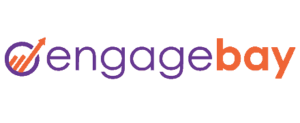- Ticketing System
- Multi-platform Support
- Self-service Portal
- Team Collaboration
- Zia
- Customization Options
- Automation
- Dashboard
- Reports
1. Ticketing System
Zoho Desk has a multichannel ticketing system that collects customer tickets from different platforms such as email, telephony, and social media. It then organizes them into one tab so that agents need not go through multiple tabs to address different issues. The software automatically prioritizes tickets according to user-set criteria such as customer type, due time, or status, giving you a clear picture of which tickets require your immediate attention and which you can deal with later.
Importantly, the software provides agents with a customer-interaction timeline that shows every exchange the customer has had with the company, be it through web forms, social media, or live chat. These contextual ticket views arm agents with the background knowledge needed to create a more personalized response. Helpfully, the app also auto-suggests solutions to the agent based on the customer complaint.
Another useful tool is the software’s Snippets feature with which agents can pre-write common responses. They can then embed a snippet into a reply whenever necessary, saving them the time and energy needed to draft a quick response. Snippets are specific to the agent who creates them. Additionally, agents can add notes to a ticket. These notes can be used to pass on pertinent information to other support staff while being hidden from the customer.
2. Multi-Platform Support
The software supports multiple customer help platforms. These include email, social media, live chat, web forms, and telephony. With emails, the app helps you handle several email addresses in one go. It pools all customer service issues from different addresses into one central location, making it easier to respond to them.
The app displays any social media messages you receive in your feed as well. You can then respond to a customer’s post directly from your feed or assign it to another team member. Conveniently, Zoho Desk automatically converts social media posts or messages into a ticket if you turn the auto conversion settings on. You can even tweak the auto conversion rules so that only posts that contain specific keywords get converted into a ticket.
Zoho Desk also has live chat widgets and web forms that you can embed into your website. You can customize everything from language to color, background, text, and position of both the web forms and widgets before you embed them onto your website. Furthermore, you can add a captcha button and allow customers to upload files or screen grabs through these platforms. Helpfully, you can convert chat conversations into a ticket with just one click.
The telephony feature is only available for Enterprise plan subscribers. With it, agents can attend calls from within the software itself. The app is equipped with interactive voice technology (IVR) that guides callers to the right agent. It also records all inbound and outbound calls for quality purposes and even has a voicemail service where customers can leave a voice message. The software automatically logs these voice messages as a new ticket and assigns them to an agent.
3. Self-Service
Along with a multi-platform customer help system, Zoho Desk allows you to create a help center where customers can find answers to common issues on their own. You can include a repository of FAQs and how-to articles, host a community or forum, and add a ticketing system within your knowledge base. The software makes it easy to set up and populate a help center. There are several default themes to choose from if you are a newbie. If you want your portal to mimic your website, you can change the color of your header, background, tabs, and font to reflect that. On the other hand, for those with more tech know-how, the software allows HTML and CSS customizations that can further make the portal an extension of their brand.
4. Team Collaboration
The Team Feed feature is the software’s employee portal. Here, team members can collaborate. This portal gives managers an overview of every ticket assigned to their team. They can also send notifications to their team through the portal, negating the need to call a meeting for every announcement.
Agents can use the portal to discuss issues with each other or ask another team member for help by using the @mention feature. They can start a one-on-one or group conversation from within the app itself. They can also tag chats and tickets, making it easy to search for them whenever the same issue crops up again in the future. Crucially, every time an agent is tagged or mentioned, the software alerts him or her immediately with a notification.
Furthermore, the software makes sharing tickets across departments an easy task too. With the ticket sharing feature, you can request agents from other departments to collaborate towards solving a customer issue. Importantly, the ownership of the ticket rests with your department even when you share it with others. The software also allows you to set access levels for different agents such that they can either have full, restricted or read-only access to a ticket.
5. Zia
Zia is Zoho’s AI assistant. It is available only for the software’s Enterprise Plan subscribers. It performs automatic sentiment analysis on all incoming tickets, giving agents a heads-up as to the satisfaction level of the customer and the foresight to prioritize the right tickets. Zia also processes tickets and assigns appropriate tags to them. What’s more, the AI drafts responses to a ticket based on the issue with appropriate content from your knowledge base. Agents can then send out the Zia-drafted responses with one click instead of wasting time drafting their own.
For business owners, Zia provides an overview of the state of your company’s customer service. It examines and highlights anomalies in your team’s performance and alerts you of trending tags and sentiments or if there is a sudden increase in incoming tickets.
Conveniently, you can access all this information from one location using the Zia dashboard.
This AI assistant can also be embedded into your website, where you can train it to perform actions for clients using the software’s skill-builder interface. Customers can chat with the AI from within your website. It processes their issues and recommends suitable solutions from your knowledge base. Importantly, if an issue remains unresolved despite its recommendations, Zia alerts managers of the same.
6. Customization Options
With Zoho Desk, you get a ton of customization options. Everything from page layouts to ticket templates and response email templates can be changed to reflect your business needs and personality. Additionally, you can apply your brand’s colors and logo to your support software and create custom fields to store additional information through your web forms. The software also allows you to map your knowledge base within your domain, making it easier for customers to access it.
7. Automation
The Blueprint Builder feature is the software’s process automation tool. It is a visual tool that lets you create an automated workflow sequence that is unique to your business. It is easy to use even for tech newbies and lets you customize every step of the process down to the last detail with a simple drag-and-drop assembly. Not only does this ensure a more organized business but also one where due process is followed, and all bases are covered.
If you want more sophisticated workflows than what the Blueprint Builder provides, you can use the software’s programming language, Deluge, to do so. Deluge gives you access to SDKs and APIs to code advanced workflow processes. You will, however, need some technical skills to use this.
8. Dashboard
The software’s dashboard gives agents a wealth of knowledge at their fingertips. A quick scan lets them know which ticket needs their immediate attention and which can wait. For managers, Zoho Desk has what they call ‘The Headquarters’ dashboard. This feature gives them an overview of critical parameters such as their team’s ticket traffic, trending sentiment, and average ticket resolution time. Also, they can see which agent is online, what they are working on, and who is on a break. Furthermore, the software’s Agent Scorecard feature tracks performance metrics such as average response time, customer happiness, and expertise for each agent along with any negative feedback they have received.
9. Reports
Zoho Desk has around 15 pre-defined reports. These include ticket reports, article reports, product reports, contact reports, customer happiness reports, and task reports. You can schedule the software to email you these reports on a daily, weekly, or quarterly basis in a variety of file formats. Besides, the software’s Advanced Analytics feature allows you to create custom reports across multiple modules for more in-depth analysis. This customization, however, comes at an additional cost.



